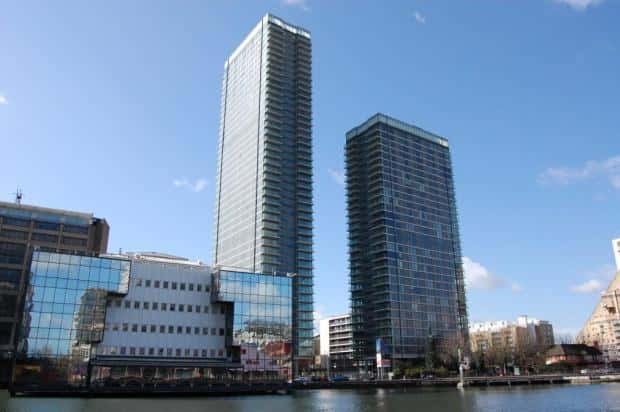
The Landmark, or more accurately Landmark Towers, is a development of two high-rise residential buildings located at the westerly end of Marsh Wall, close to the Canary Wharf business district.
Landmark East Tower stands at 45 storeys and Landmark West Tower, 30. The Landmark was completed in 2010 and is one of the favoured residential developments in the Canary Wharf area, perhaps second only to Pan Peninsula.
The Landmark is not to be confused with Landmark Pinnacle which is a new development located at the site immediately adjacent to The Landmark. Construction of Landmark Pinnacle has already commenced and it will go on to be the tallest residential tower in London (although the height is calculated by number of storeys, rather than meterage – Spire London will actually become London’s tallest residential tower once complete, in fact it will be the tallest residential tower in Western Europe).
Residents at The Landmark benefit from a 24 hour, 7 days a week concierge and an on-site gymnasium. Some apartments also benefit from a secure underground parking space.
In 2007, the development received recognition as the Best High Rise Development and Best High Rise Architecture in the Daily Mail UK Property Awards.
Key Facts
Developer: The Young Group
Architects: Squire & Partners
Completion: 2010
Nearest transport link: Equidistant from South Quay DLR & Heron Quays DLR
Why would I want to live there?
Location, location location!
OK, so its more than that, but location is certainly a big part of The Landmark’s appeal. Yes, its located at the far-westerly end of Marsh Wall, but that puts you close to the Thames and Canary Riverside.
Whilst other developments offer facilities which The Landmark doesn’t have – a cinema room, swimming pool, valet parking – The Landmark still offers a gym and concierge.
What we like the most though is the quality of finish at The Landmark. 2010 isn’t that long ago, but there are many developments that haven’t aged as well as The Landmark. It still feels fresh and contemporary.
Oh, and the views. Pretty darn good!
Rental values at The Landmark
Studios from £325 per week
1 bedroom apartments from £385 per week
2 bedroom apartments from £525 per week
Search our E14 Property To Let HERE

